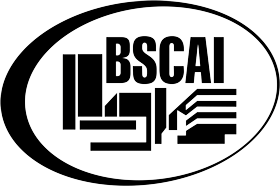
The National Labor Relations Board (NLRB) standard regarding what constitutes a joint employment relationship between two organizations has changed several times in recent months creating confusion for businesses.
Joint employer liability has particular relevance for building services contractors. First, joint employer liability can apply in instances between contractors and subcontractors. Second, joint employer liability can apply when companies use temporary workers from a staffing agency.
In 2015, the NLRB under President Obama broadened the definition of what constitutes a joint employment relationship. The definition of joint employment was then narrowed to the prior standard in December 2017; however, the standard was broadened again in February 2018 after the Board vacated its decision.
The decision was vacated following a memo issued on February 9 by the NLRB Inspector General stating that Board member William Emanuel should have recused himself from the case involving Hy-Brand Industrial Contractors (Hy-Brand) because of a potential conflict of interest.
In the Hy-Brand case, the Board voted three to two to return to the traditional “joint employer” standard, which requires a business to have a direct and immediate connection to the employees in question to be held jointly liable for labor violations.
Emanuel voted with the majority in the Hy-Brand case returning to the traditional standard for a joint employment relationship. Emanuel, prior to joining the Board, worked at the law firm of Littler Mendelson, which represented Browning-Ferris Industries (Browning-Ferris) in the 2015 NLRB case that expanded the definition of joint employer liability to indirect control.
On February 26, in a 3-0 decision, the NLRB unanimously vacated the decision made in December 2017 in the Hy-Brand case that returned to a traditional standard for joint employer liability. On March 9, Hy-Brand Industrial Contractors appealed the decision and asked that the NLRB allow Emanuel to participate in both the Hy-Brand case and its subsequent reversal since he did not represent any of the parties in the Browning-Ferris case. The NLRB has not yet ruled on the appeal.
On April 5, NLRB General Counsel Peter Robb filed a response to the NLRB’s action vacating the decision in the Hy-Brand case. In the filing, Robb disapproved of the Board’s decision to exclude Emanuel from deliberations in vacating the Hy-Brand case, claiming the Board ignored precedent and may even have broken the law in doing so. Moreover, Robb stated that the Board’s conduct was “not consistent with its obligations under the [National Labor Relations] Act or the Administrative Procedures Act” and denied the parties in the case their due process rights. Robb has asked the NLRB to reconsider its withdrawal of the Hy-Brand decision.
The D.C. Circuit Court of Appeals granted a motion on April 6 by the NLRB to restart its review of Browning-Ferris v. NLRB due to the “extraordinary circumstances” surrounding the joint employer issue. The court was close to issuing a ruling when the Board issued its decision in the Hy-Brand case vacating its decision in the Browning-Ferris case. The court has suspended further consideration of Browning-Ferris v. NLRB until the Board rules again in the Hy-Brand case.
Adding to the flurry of activity, on April 12, John Ring was sworn in as the new NLRB Chairman. Republican members continue to have a 3-2 majority on the five-member board. However, the Board may be limited in making changes to the joint employer standard unless William Emanuel is allowed to vote on cases challenging the Browning-Ferris decision.
In Congress, last November the House of Representatives approved the Save Local Business Act (H.R. 3441) in what was largely a party line vote. BSCAI supports the legislation that would codify the need for “direct control” to be considered a joint employer by the NLRB. The bill awaits Senate action.
BSCAI’s government relations staff is monitoring the evolving standard and its potential impact on building service contractors. The association is also a working with the Coalition for a Democratic Workplace (CDW) to return to the long-held standard for joint employer liability.
Companies should be aware that the broader standard for joint employer liability remains in place for now and that indirect control, contractually reserved control that has never been exercised, or control that is limited and routine, is sufficient to establish a joint employer relationship.
Businesses should evaluate their agreements and policies regarding joint employer liability. In some circumstances, companies may want to change them to limit their legal exposure. BSCAI’s government relations staff stands ready to serve as a resource on this timely workforce issue.

 The Down and Dirty on Cleaning in Virus Season
The Down and Dirty on Cleaning in Virus Season How Surfactant Use is Expanding in Commercial Cleaning
How Surfactant Use is Expanding in Commercial Cleaning Clean Buildings Conference
Clean Buildings Conference
